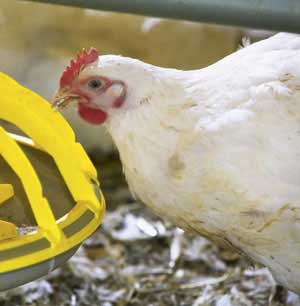Research: Ground sorghum in broiler feeds

Australian scientists at the University of New England (Armidale, NSW) cooperated with the Norwegian University of Life Sciences to study if the extent and method of grinding sorghum prior to inclusion in complete pelleted broiler chicken diets affects broiler gut development and performance.
A broiler experiment was conducted to examine the effects of sorghum particle size and milling type on the performance, nitrogen corrected apparent metabolisable energy (AMEn), digestive tract development, digesta pH, duodenal digesta particle size and digesta passage rate.
Trial setup
Complete pelleted diets with identical botanical and chemical composition containing 750 g/kg whole sorghum (WS), sorghum ground through hammer mill with 1 mm and 3 mm screen (HM1 and HM3) and sorghum ground on a roller mill with 0.15 mm spacing (RM0.15), were made.
Sorghum for diets HM3 and RM0.15 were milled to approximately the same mean particle size.
Results
Diet WS resulted in poorer weight gain and feed conversion ratio (FCR) than the other diets from 11 to 21 days of age, while diet RM0.15 resulted in improved FCR.
Apparent MEn determined between 25 and 28 days of age, however, was higher for diet WS than for the other diets.
This was possibly due to a longer adaptation time to a larger feed particle size, as indicated by a lower pH in the gizzard and smaller duodenal digesta particle size for this diet.
Diet HM1 gave similar performance as diet HM3, but resulted in a significantly smaller gizzard, a higher pH of the gizzard content, a lower pH of the duodenal content and larger particles in the duodenal contents, thus indicating that gizzard development and activity were compromised by this diet.
Total tract passage rate of the liquid phase marker was slower in the WS fed birds, but there were no differences in solid phase marker excretion rates.











